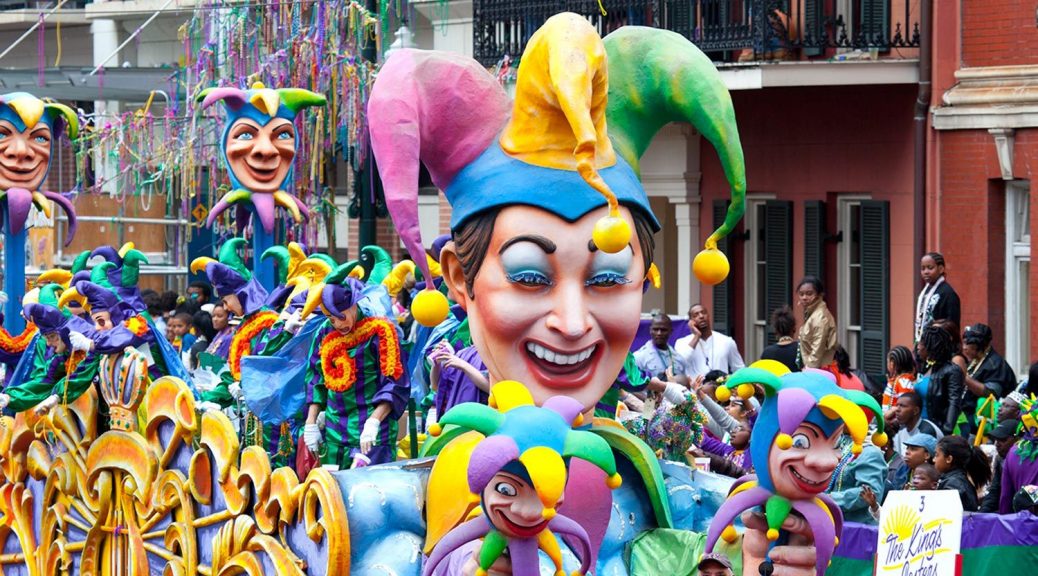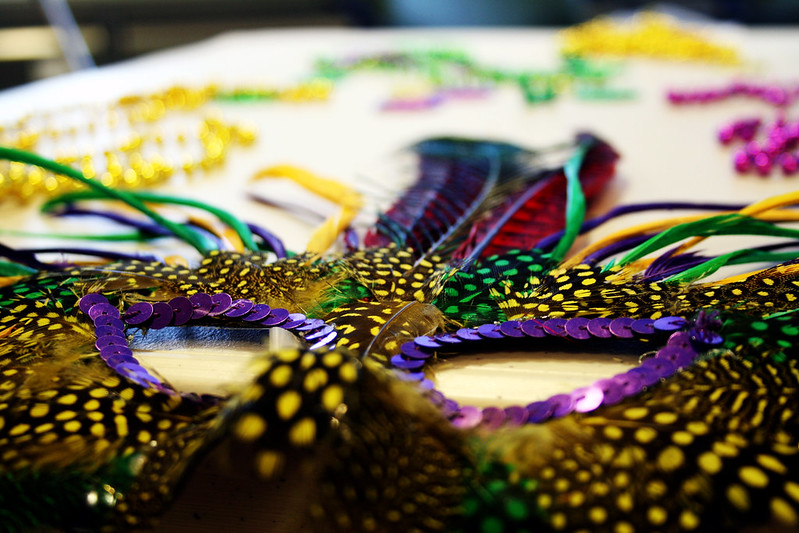By Lauren Anderson
Green, purple, and gold. Decorated masks, elaborate costumes, lively parties, fragrant food. All of these are commonly associated with the holiday Mardi Gras; in French meaning “Fat Tuesday”.
Mardi Gras is celebrated in various countries around the world, New Orleans, Louisiana hosting one of the most popular celebrations, along with Venice, Italy and Nice, France. While this is the case, many do not know where Mardi Gras originated, or what the celebrations are meant for. Each year, millions gather the day before
“Ash Wednesday,” (usually in the month of February) counting down 40 days until Easter. Generally, those who religiously practice Lent indulge in their favorite activities and foods before giving them up for the fasting of Lent.
The majority of Americans think of New Orleans when they hear Mardi Gras, but this celebration was influenced by Carnival, brought over by the French. In France, “carnival” developed from the Italian word “carne levare” meaning to remove meat. This is because traditionally, practicing Catholics and Anglicans do not eat meat once Lent begins, along with flavorful foods that have sugar, eggs, dairy products, and fat.
Most Mardi Gras celebrations include meat, and in addition, a cake called “King Cake” or “La Galette des Rois”. King Cake is popular in France and New Orleans. This sweet bread has a rich cinnamon filling, and often, a small ceramic baby (representing baby Jesus) that is baked into the cake. Whoever finds the piece with the baby is named the King or Queen of Mardi Gras/Carnival and has good luck for the year. The city of New Orleans floods with people celebrating at the parade each year, where a few lucky children are featured as the Kings and Queens of the day. Green, purple, and gold embellish each float, the people, and the streets of the city.
It is not known why masks are associated with the holiday, but this is most commonly seen in Venice. Since it was celebrated as a carnival over time, it is thought that costumes and masks became popular in response to this.
These celebrations spread world wide, especially to land conquered by the French and Italians. As they colonized new regions, they shared their traditions in the new settlements. Many African countries, other European countries, South and North American countries and Caribbean Islands enjoy their own version of the annual tradition.
Because of my French heritage, my family celebrates Mardi Gras with our family traditions. Each year, we have our favorite foods and I make a king cake with a recipe passed down from my grandmother. If you have a chance to taste King Cake, or travel to a city that celebrates Mardi Gras, make sure to experience the excitement.
This year, Mardi Gras falls on Tuesday, February 28th.

For a King Cake recipe:
http://www.bettycrocker.com/recipes/quick-mardi-gras-king-cake/a285aa15-62d7-493b-8d34-b00038646c81
For some more information on the celebrations and traditions:
http://www.mardigrasneworleans.com/history.html
http://www.nicecarnaval.com/en/carnaval/historique/origine.php
Featured image from Wikimedia Commons
Lauren is a sophomore undergraduate student majoring in Cultural Anthropology and minoring in Environmental Studies. She grew up in Chicago, but moved to Huntington Beach during high school. Last year, she lived in Paris where she enjoyed traveling and learning new languages and cultures. She speaks French and some Italian. In her free time, she likes exploring LA, listening to music, reading, visiting museums, cooking new recipes, watching the Chicago Cubs and Blackhawks games, and playing piano.


